Combating Water Insecurity in Saskatchewan with Real-Time Data
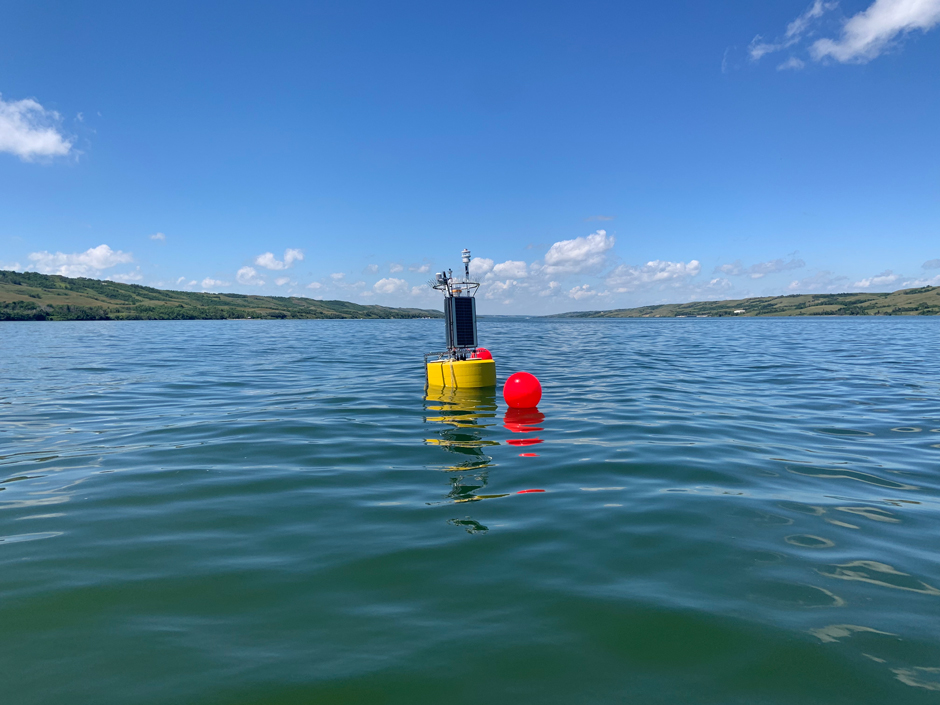 Superbuoy (a CB-950) deployed on Buffalo Pound Lake on a clear day (Credit: Katy Nugent / Global Institute for Water Security)
Superbuoy (a CB-950) deployed on Buffalo Pound Lake on a clear day (Credit: Katy Nugent / Global Institute for Water Security)The prairies of Saskatchewan can be described as one of the least water-secure parts of Canada, making water quality monitoring essential for informed resource management in a region already facing water insecurity. While natural physical properties worsen some of the poor water quality conditions in the region, others are connected to land use.
Having grown up spending summers on the shores of Lake Huron, Helen Baulch, an associate professor at the School of Environment and Sustainability at the University of Saskatchewan, has always been dedicated to the protection of water resources.
Looking back fondly at her childhood playing along the shore, Baulch also recalls the invasion of quagga mussels during her teenage years and watching the lake change as a result. Baulch focused on ecological studies and limnology, where she gained experience working with lakes.
“I was really lucky to have a lot of exposure to limnology as a discipline early on,” explains Baulch. Now a professor working on water quality, she notes, “The technology we use and research we do, is immediately used and usable, which is a rare gift for a researcher.”
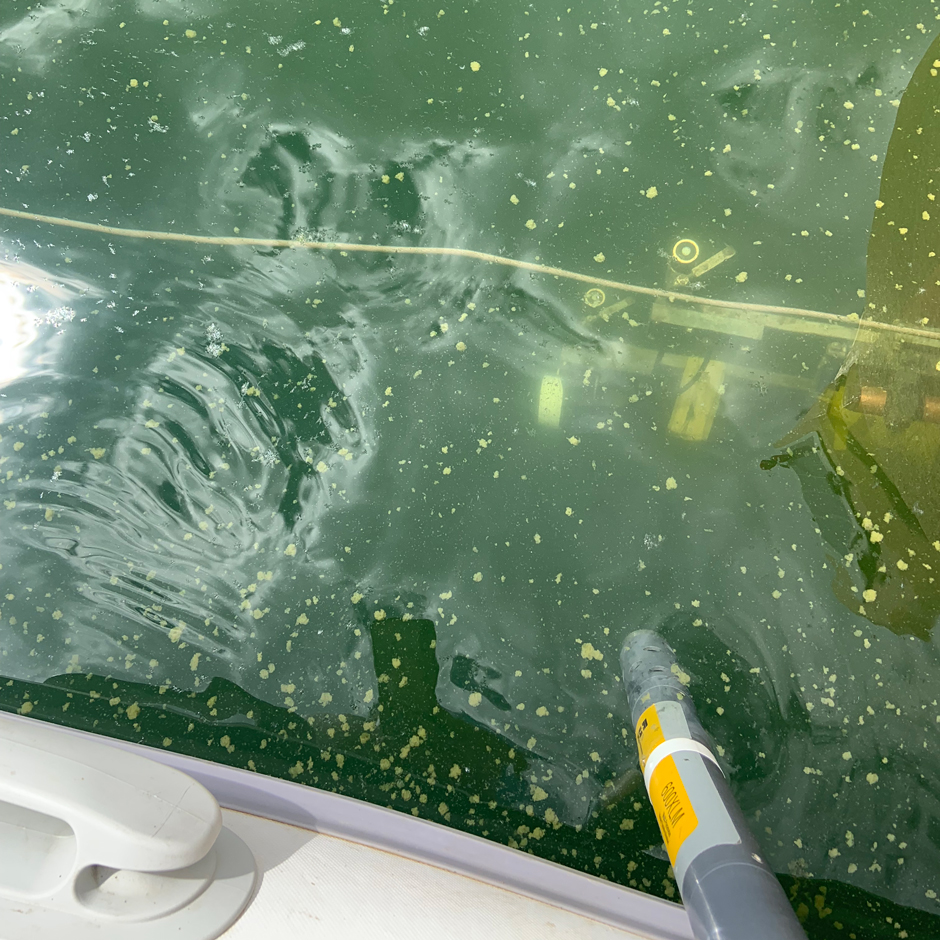
YSI (600 Series Sonde), beside the PAR sensors deployed just under the surface. (Credit: Katy Nugent / Global Institute for Water Security)
Using Data to Inform Treatment Plants and Combat Water Insecurity in Saskatchewan
With real-time monitoring systems in place, water treatment operators can better respond to changing conditions, and resource managers can also better understand conditions in the target water body. Much of Baulch’s work focuses on Buffalo Pound Lake and how to use environmental data to support water treatment in a lake that has issues of blooms and elevated organic carbon.
Baulch expands, saying, “We can safely treat that water. A key goal is understanding changes in source water quality, and adapting to those changes.” She adds, “I really enjoy trying to move into the solution space on water quality issues. We work to identify the most effective changes we can make in land and water management. That means thinking about water treatment, but also about managing flows and agricultural nutrient management specific to this region.”
Baulch splits her time between teaching classes, conducting research, and communicating findings with the government and water treatment facilities. The schedule is demanding, but each element is essential—including communicating with stakeholders to improve water quality.
“Working to advance water quality really involves a lot of dialogue and outreach, which can be politically sensitive, and also can be hard to squeeze into a busy schedule, though I try to make it a priority,” states Baulch.
While water quality issues are common in Saskatchewan, much like they are in many other parts of the world, there is a benefit to capacity building between researchers and institutions. According to Baulch, the most immediate use of the data collected is by the treatment plant, supporting the use of Buffalo Pound Lake as a water supply for two cities.
She explains, “There are dozens of other water utilities in the region that have similar issues, and there just isn’t capacity to have scientists at each location to help. So that’s a deeper question I have about how we increase our capacity to build this type of partnership elsewhere.”
One example of this partnership is the Global Water Futures Observatories (GWFO), of which Buffalo Pound Lake is a station. Operated under the Canada Foundation for Innovation and its Major Sciences Initiative sponsorship, 64 instrumented river basins, lakes, streams, and wetlands, 15 deployable measurement systems, and 18 water laboratories all gather data and contribute to a larger network of data.
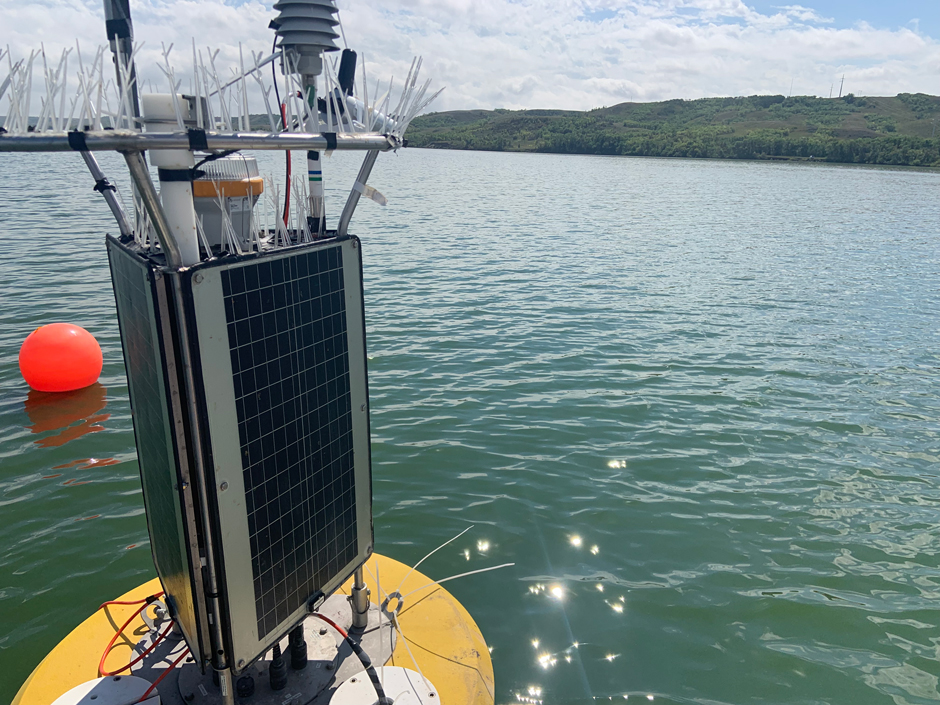
A close-up view of the monitoring equipment attached to Superbuoy on a foggy day. (Credit: Katy Nugent / Global Institute for Water Security)
Buffalo Pound Lake
Buffalo Pound Lake is very shallow and, therefore, stratifies periodically. Combined with high nutrient loads and organic carbon, this can create challenges for water treatment. To work around this, Baulch explains that monitoring with real-time data can give operators data when they need it.
Working with managers also helps researchers better understand the lake. Baulch elaborates, “Some key eureka moments have come from talking with the plant about the lake, the data, and issues they were having.”
For Buffalo Pound Lake, new insights about the seasonality of buoyant cyanobacteria and impacts of thermal stratification have come from these two-way conversations, with immediate benefits to water treatment.
Researching and understanding the physical and chemical properties of the lake has helped manage both cyanobacteria and disinfectant byproducts associated with dissolved organic matter. Since Buffalo Pound Lake is a reservoir, monitoring the lake can also help inform flow management, particularly when considering water quality.
Baulch begins, “The balance between flow from upstream reservoir versus the local catchment has an impact on water quality. We’re trying to understand that more deeply, and hopefully help lake managers start to integrate water quality in their decision making around flows.”
“That’s a really tricky one. Because like all reservoirs, there are a lot of objectives associated with its management. We’re in very early days of dialogue with government on what we see in terms of the analysis we’ve done so far, and what might be helpful for water treatment,” she continues.
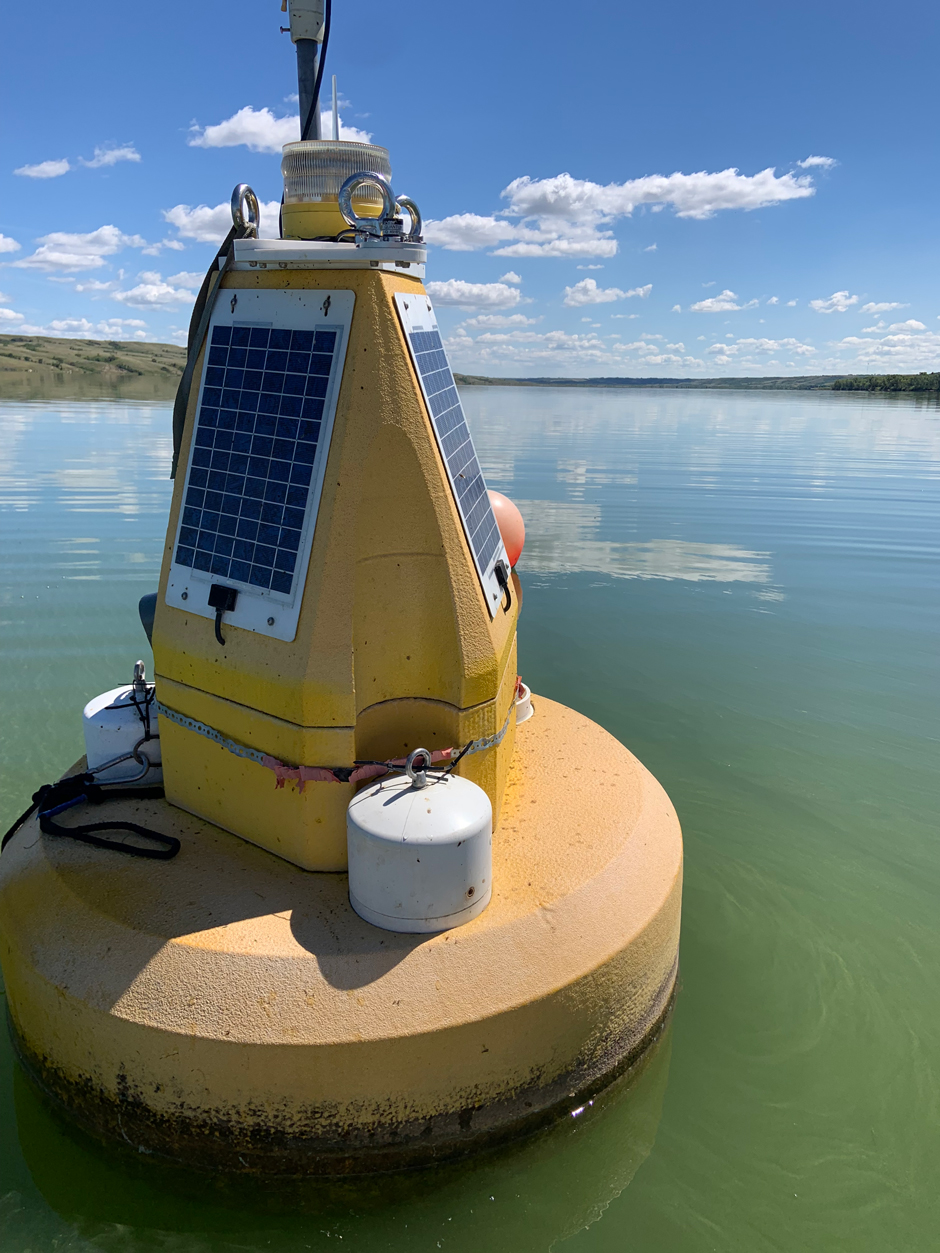
Big Buoy deployed on the green waters of Buffalo Pound Lake. (Credit: Katy Nugent / Global Institute for Water Security)
The Convenience of Real-Time Systems
The systems deployed on Buffalo Pound Lake have changed the way plants treat water, particularly in cases of poor water quality. A total of four systems are used to support open water and under-ice deployments, collecting data at ten-minute intervals.
The summer buoys, a CB-950 affectionately named Superbuoy and an older MB-200 named Big Buoy, monitor conditions, focusing particularly on algal blooms. Temperature sensors have been some of the most important sensors for water treatment plants, and they are key to diagnosing stratification. While stratification is often brief in the lake, multi-day, extreme events have occurred that require changes in treatment plant operations.
The buoys are also equipped with YSI sensors, where phycocyanin, turbidity, pH and oxygen lend important scientific and operational insights. The buoys are also equipped with three LI-COR light sensors, a LI-190 placed in and above the water and two LI-192 deployed under the water. All of the sensors help Baulch and her colleagues understand drivers and impacts of ecological change in this dynamic system.
Exciting new technology on their new Superbuoy includes a CO2 sensor and a camera system, which has helped observe scums and understand drivers of buoyant cyanobacteria, which have been a concern to the water treatment plant.
Data is recorded and streamed live, updating as often as every hour, creating a fundamental tool used by both researchers and water treatment plant partners to assist in the early detection of reservoir changes, which may lead to altering the treatment process.
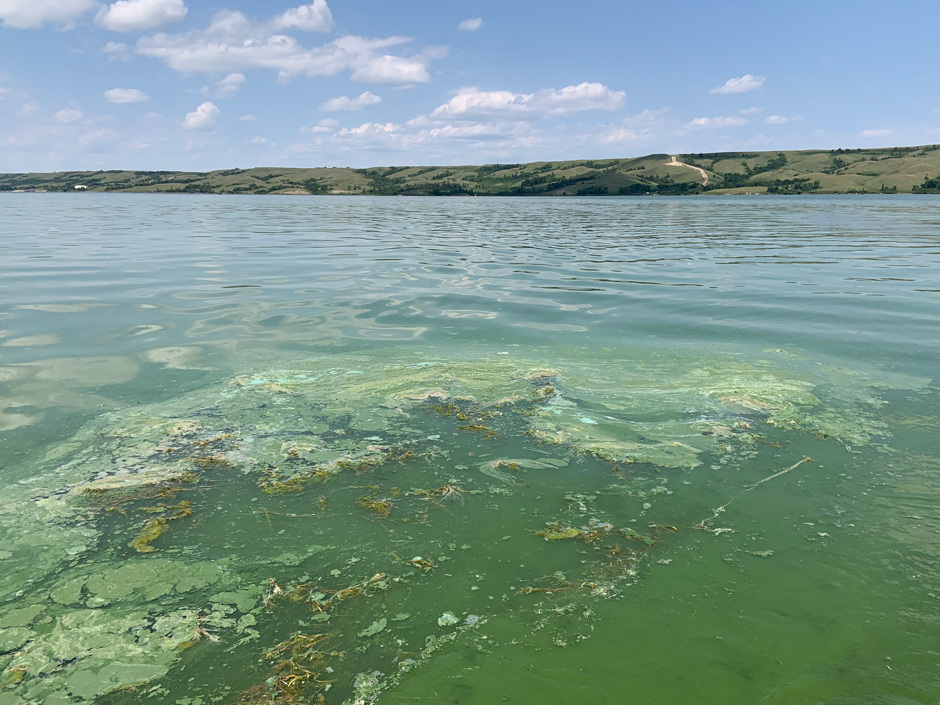
Buffalo Pound Lake Scum. (Credit: Katy Nugent / Global Institute for Water Security)
While the status of the lake as a water intake source has protected it from vandalism thus far, some environmental factors make monitoring the lake year-round difficult. Buffalo Pound Lake is also very productive, so biofouling can easily affect sensors, although wipers and frequent maintenance ensure good-quality data in summer when algal biomass is high.
In winter, ice conditions could destroy a buoy hull, so they shift to under-ice installations, deploying sensors about 1.5m below the ice—to keep the equipment safely below the thick accumulations of ice that can occur.
Investment from the water treatment plant that relies on the data has helped support these sensor-based monitoring efforts in Buffalo Pound Lake, as has the scientific and logistical support of the government and research funding.
Because the lake is shallow and always mixing, changes in water quality can be sudden and dynamic. The continuous stream of data supplied by the buoys helps connect data points between less frequent sampling as well as the state of the lake leading up to, during, and after algal blooms.
The data collected by the systems is pushed to the WQData LIVE web portal, which allows Baulch to view real-time lake conditions from the comfort of her office. Immediate data availability has shaped how resource and plant managers operate.
Baulch explains, “You just have the pulse of the lake when the buoys are active. You sit down at your desk before you check your email and can look at the oxygen curves from the last day and it’s just interesting to get to know the lake to that level and see ‘Oh, it’s cloudy today’—or even the impacts of smoke on light and seeing that coming through in the oxygen curves.”
Beyond the science, she emphasizes, “The operators also know when they need to change their decisions–so that provides an immediate benefit to the streamed data.”
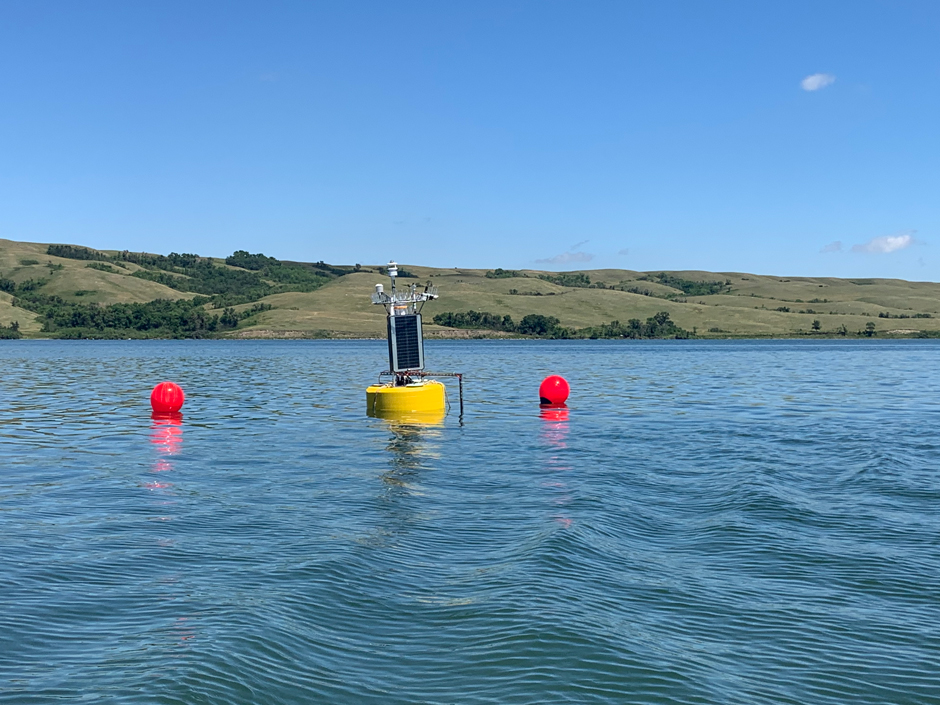
Superbuoy on Buffalo Pound Lake (Credit: Katy Nugent / Global Institute for Water Security)
Conclusion
The convenience of the systems also makes data collection easy when time is a limited resource and conditions may be unsafe for research teams. According to Baulch, the durability and reliability of the buoys, particularly in source water monitoring and water treatment applications, have been game-changing due to WQData LIVE‘s alarm system and the ability to troubleshoot while staying online.
One thing that has stayed the same over the years has been the investment from the industry and other stakeholders. Baulch elaborates, “I really enjoy working with a really diverse team, who are all interested in issues of water security and sustainability. It’s rewarding to contribute to some of the things we need to work on in terms of water security in my region. Training people, teaching, and then working on solutions and adaptations to the issues we face.”




Pingback: Research Brief: Impacts of Variable Hydrology and Water Quality on Harmful Algal Blooms in Saskatchewan - Lake Scientist
Matthew
January 21, 2025 at 11:19 pm
I really appreciated this article. It does a great job of pointing out how absolutely critical the lakes and reservoirs of southern Saskatchewan are for drinking water, agriculture, industry, recreation, and so much more. It’s something that is really easy to forget how dependent we are on them. I like to think I’m pretty aware of the situation, and even I was surprised at the first paragraph. How can we have water insecurity, we’ve got a 100,000 lakes after all. Thanks for helping to raise awareness!